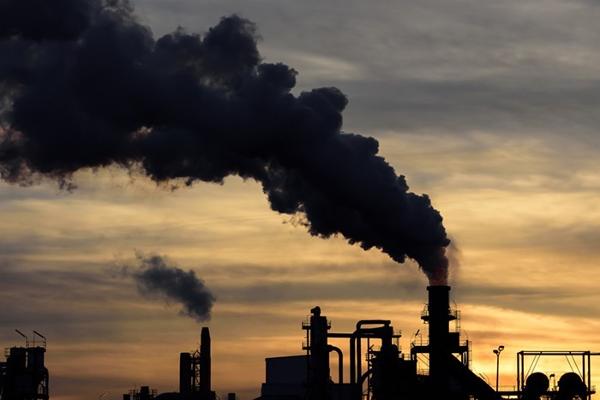The data presented in the 2019 BP Statistical Review of World Energy is not encouraging when it comes to the world’s efforts to reduce CO2 emissions, especially via decreasing the use of coal. As noted in the group chief economist’s analysis, the share of coal in our global energy mix is at virtually at the same level as it was 20 years ago. And the data for 2018 does not promise much of a progress for the next 20 years either. Instead it rather fits the path of “business as usual” scenarios presented by multiple global energy outlooks that predict coal demand remaining stable all the way through 2040.
Coal’s persistence can be attributed to a global shift in coal demand from the developed to the developing world, which relates to economic growth.
In 2018 electrification has been a major driver behind growth in coal power generation - much of which has not been combined with decarbonization. Ashia is the main “offender” here with China and India in the lead when it comes to volumes consumed. Per BP’s review, in 2018 these countries consumed respectively 16.3 and 36.3 million tonnes of oil equivalent (mtoe) more coal than they did in 2017. In contrast, North America and Europe accounted for the largest decrease in coal demand (almost 22 mtoe and 11.3 respectively).
But while China and India capture the most attention due to the sheer volume of their coal consumption, they are outperformed by smaller Asian countries when it comes to the rate of growth, including Bangladesh (+12.1%), Vietnam (+22.9%), and Pakistan (+63.3%). For now, one might be tempted to overlook these countries since the growth occurs from a very small base. But the high rate implies that these volumes will not stay trivial for a long and will rise quickly. Additionally, already in 2018 - as an aggregate- “the other” small and less developed countries in Asia Pacific (Bangladesh, Indonesia, Malaysia, Pakistan, Philippines, Sri Lanka, Thailand, Vietnam) stand at 184.7 mtoe, which is more than 1/3 of India’s 2018 consumption and almost 20 mtoe more than the same countries consumed in 2017 (11.6% growth).
The BP numbers for 2018 are consistent with trends in “business as usual” scenarios presented in major global energy outlooks. This includes BP’s own 2019 Energy Outlook’s “evolving transition” scenario that predicts a drop in the share of coal in global primary energy consumption (28% in 2017 vs. 20% in 2040) but no significant decline in absolute volumes (3731 vs. 3625 Mtoe, respectively in 2017 and 2040).
Much of the demand growth and regional shift in coal use are related to patterns of economic growth: as countries move from agricultural to industrial economies they need more of reliable and affordable energy that is easy to access. Indeed, per the BP Review, industry is the major source of coal demand. So is developing world’s population, which not only will grow precipitously in the next decades but also will strive for better living standards. This includes access to electricity, which - as the BP review shows- is the main driver behind growth in coal power generation.
Why? Coal just fits the bill. It is cheaper than other fuels and more uniformly distributed across the world. In fact, per the Review, most global proven coal reserves are in the developing world, with 42.2 of total reserves in the energy-hungry Asia Pacific region. In much of the developing world – despite its significant carbon footprint - coal generated power is a significant upgrade over open fire and simple stoves fueled by kerosene, biomass or coal, all of which expose their users to direct household pollution and are a cause of premature death.
The 2018 data provided by the BP Statistical Review of World Energy should be a source of concern for anyone worried about the level of global CO2 emissions. Several points come to mind:
1. Coal use is not declining. We see the share of coal in our global energy mix increase in 2018. But even if in the future this share falls, we should be far from reassured. Instead we should pay attention to absolute consumption volumes, since volumes not shares determine the levels of carbon emissions.
2. Coal use decreases are countered by coal increases. The fall in coal demand in the OECD countries is not enough to reduce world’s CO2 emissions as it is quickly replaced by demand from developing world. We have to consider that, absent major technological breakthrough, coal will most likely remain a staple of global energy diet.
3. Coal is still attractive. Coal is an ideal fuel for some countries since it is (in most cases) cheaper than its alternatives, relatively easy to transport and store, and more uniformly distributed around the globe. Thus, it provides a level of energy security. For example, natural gas is not only limited to few suppliers but is more expensive and its prices can fluctuate widely. Domestic or regional access is also attractive given the increasingly tense trade relationships around the world.
4. Emissions solutions much include wide range of options. OECD countries are and should be a leading force in developing all-inclusive solutions to world energy transition. But while many developed countries could at some point remove coal completely from their energy mix, they must take into account that coal is unlikely to disappear as a fuel of choice elsewhere in the world. Thus, a look beyond renewables is crucial, including R&D on hydrogen, carbon capture, or nuclear power. A narrow focus could result in missed opportunities.
5. Energy transitions must be cost sensitive. Even developed countries need to be careful in their push for energy transition, particularly when this means higher energy prices. Wealth disparities within developed societies can be source of significant backlash. Approximately 16.9 % of EU citizens are considered at risk of poverty in 2017 even after social transfers. The “yellow jackets” protests in France illustrate the potential issues that OECD world could face if energy prices raise too high.
The author is Nonresident fellow for the Center for Energy Studies at Rice University’s Baker Institute for Public Policy & senior fellow at the Kleinman Center for Energy Policy, University of Pennsylvania.




















